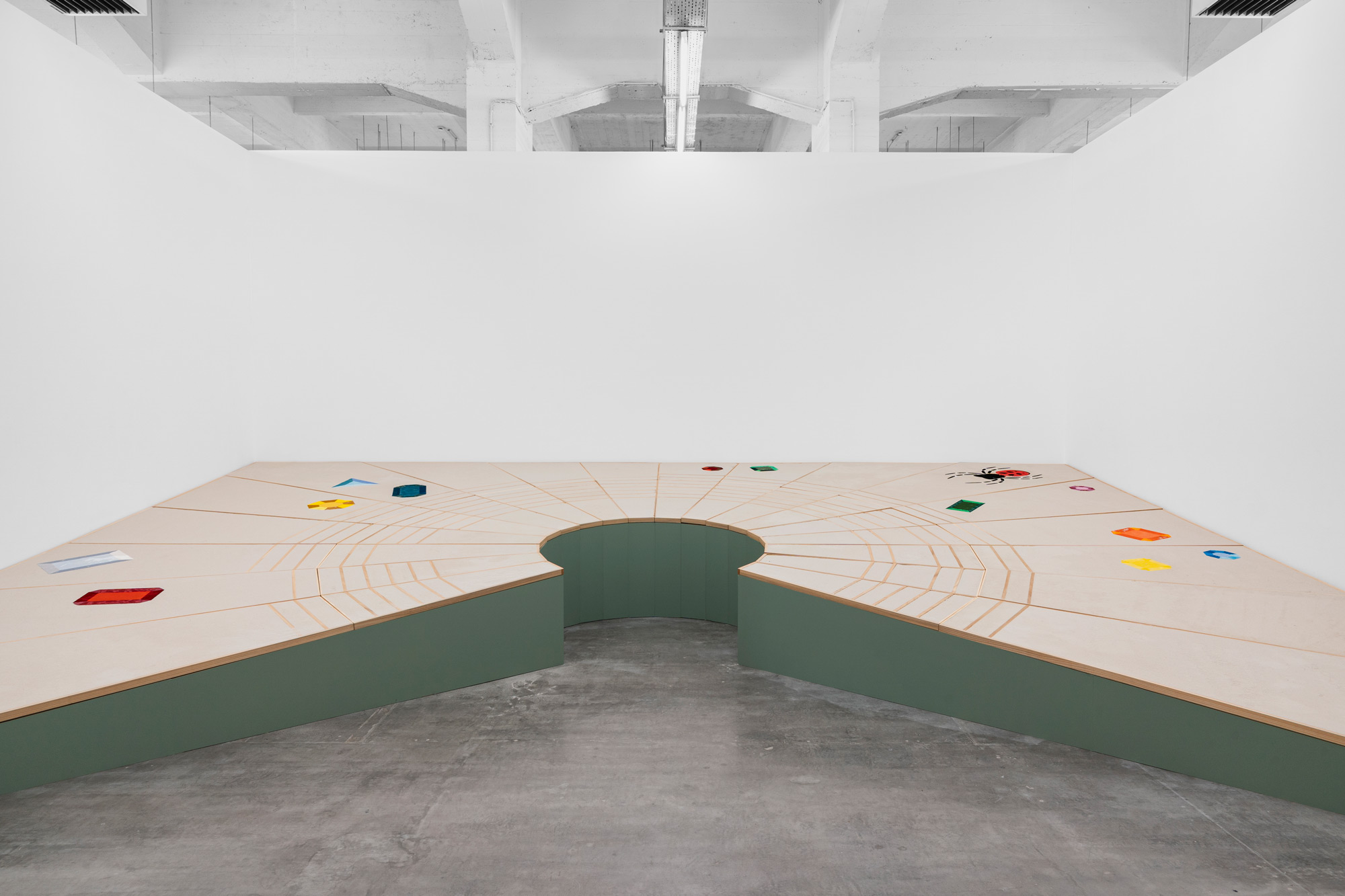
Home is dear, Home is best, 2022
Pigment, sand, wooden structure
sizes variable
Photo credits: Fabrice Schneider
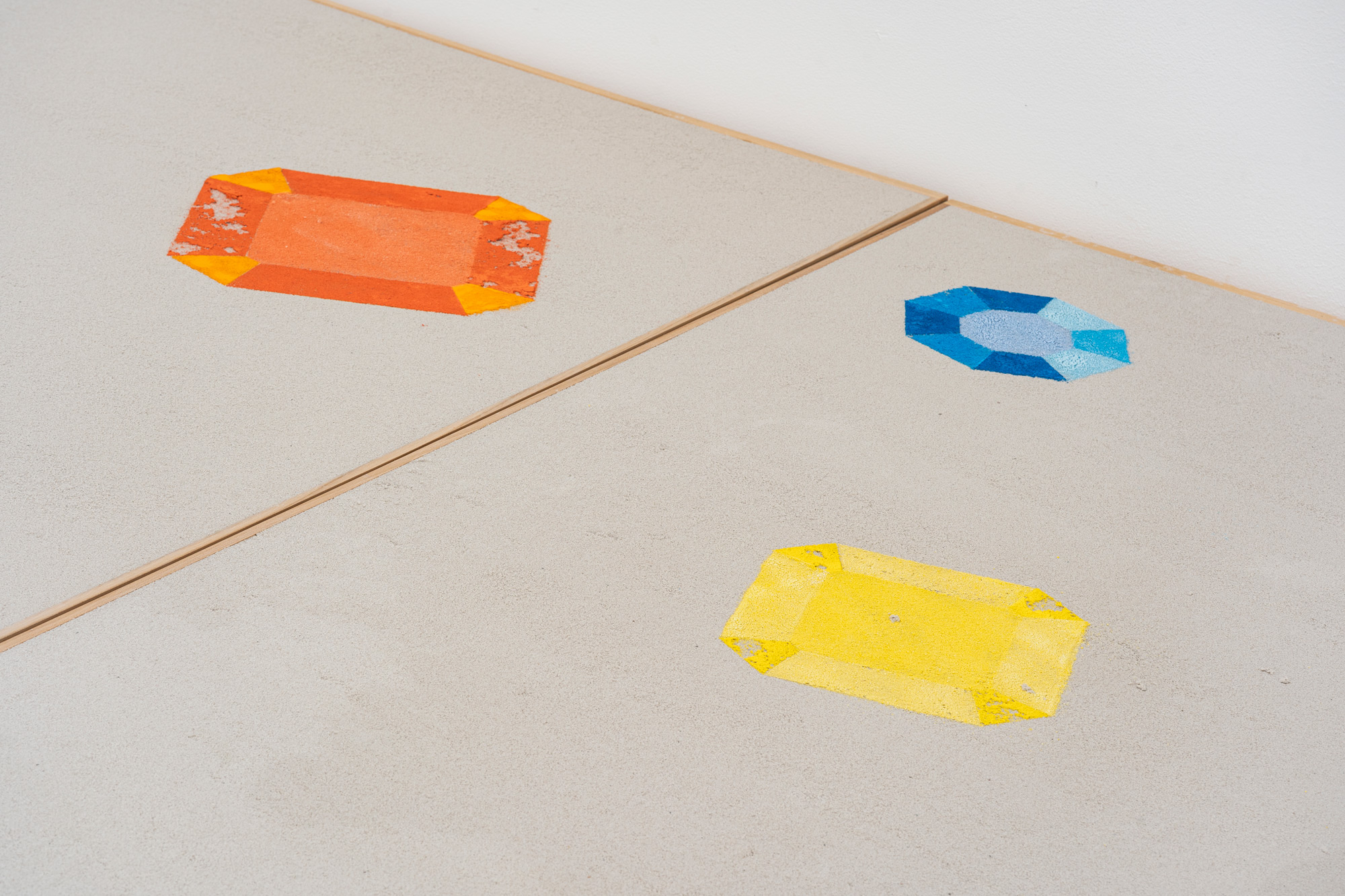
Home is dear, Home is best, 2022
Pigment, sand, wooden structure
sizes variable
Photo credits: Fabrice Schneider
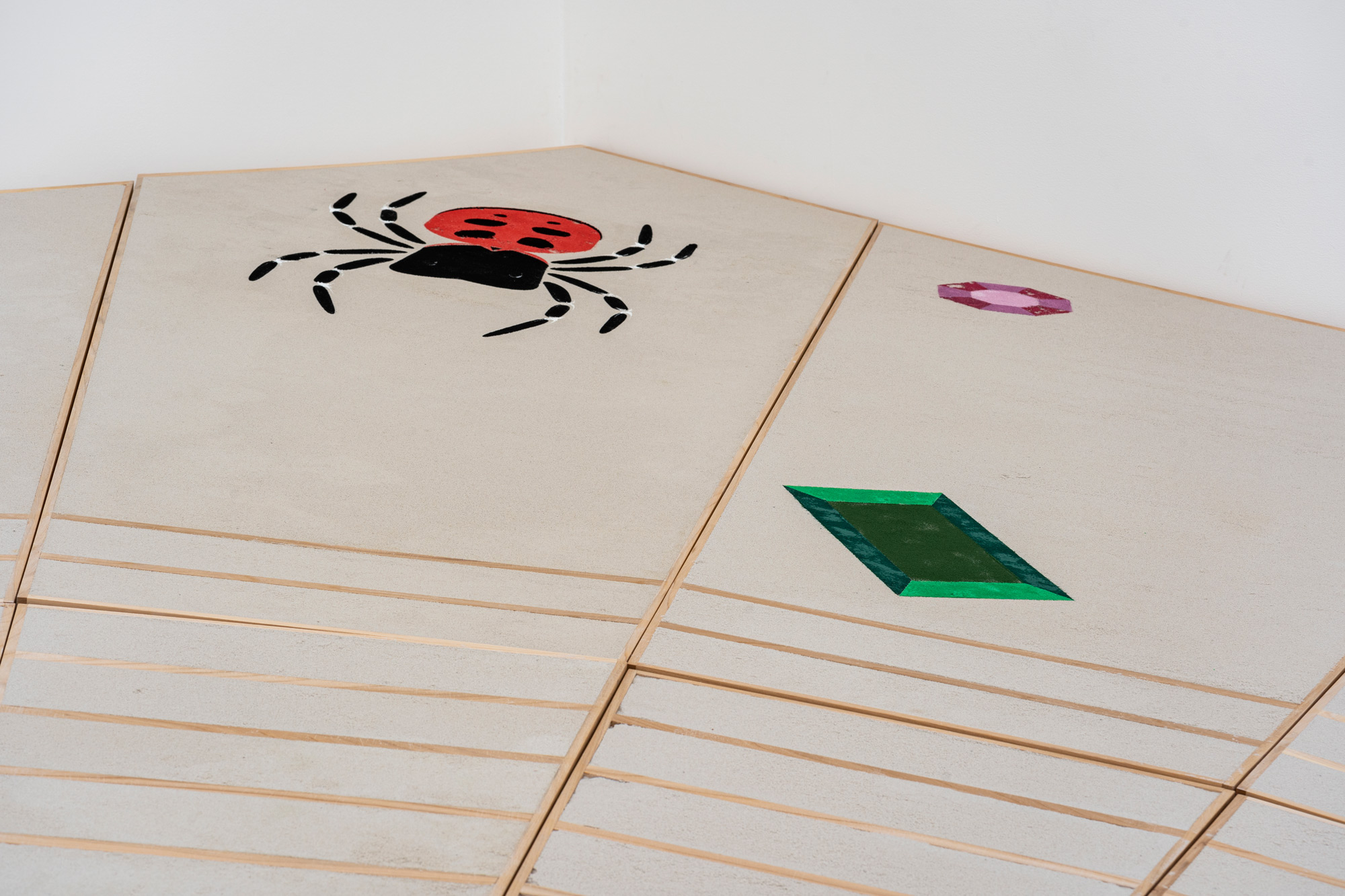
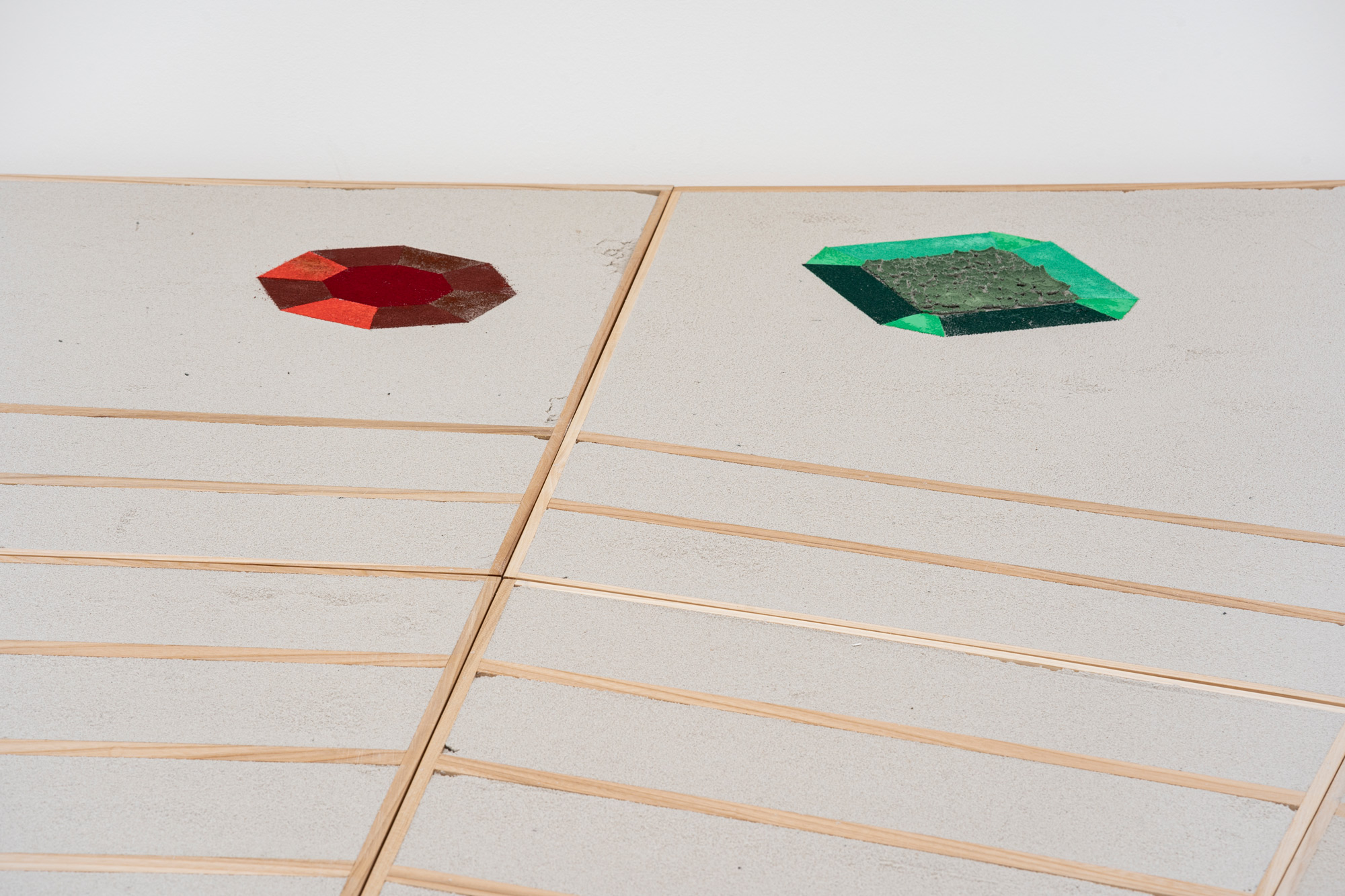
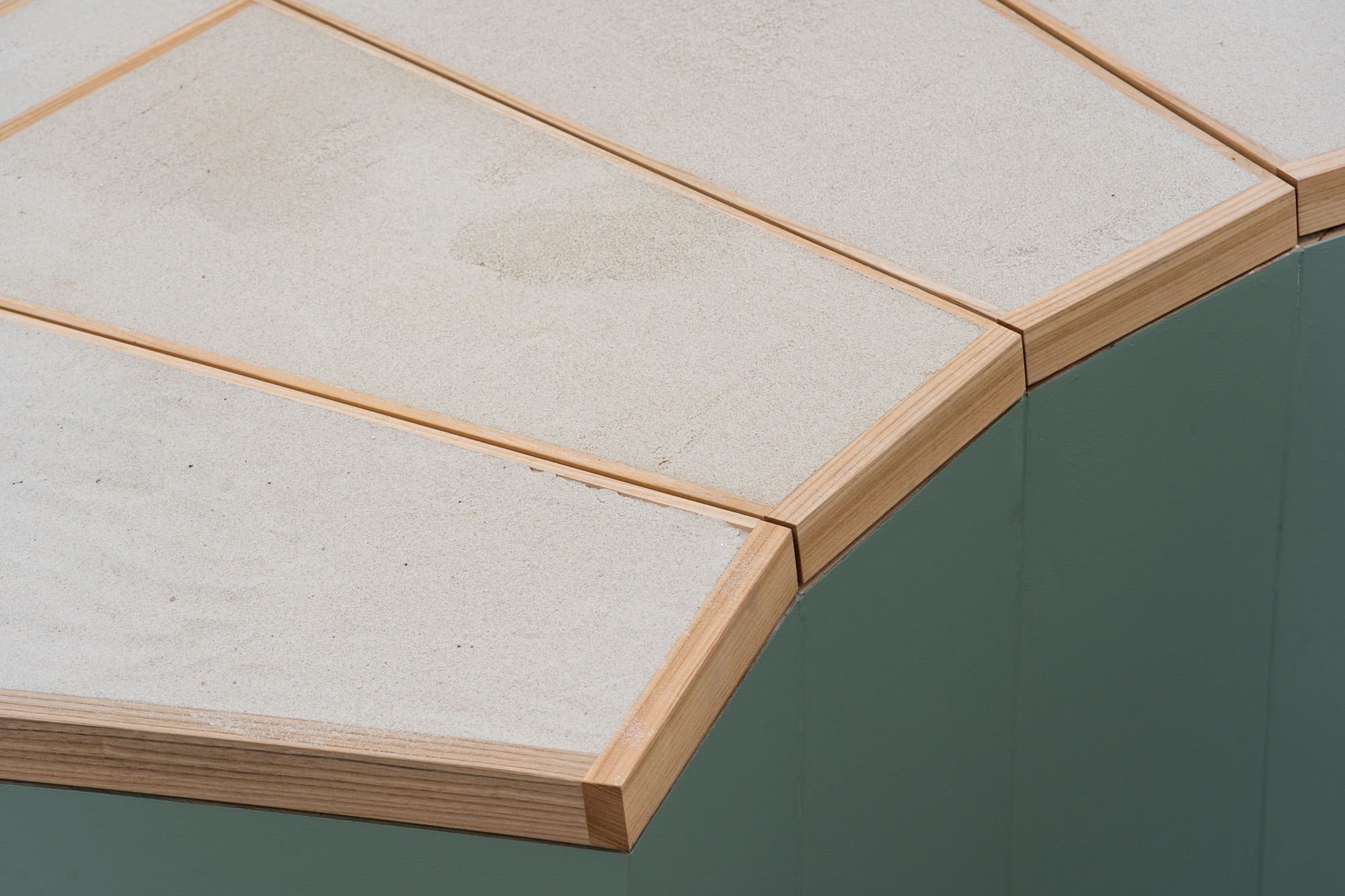
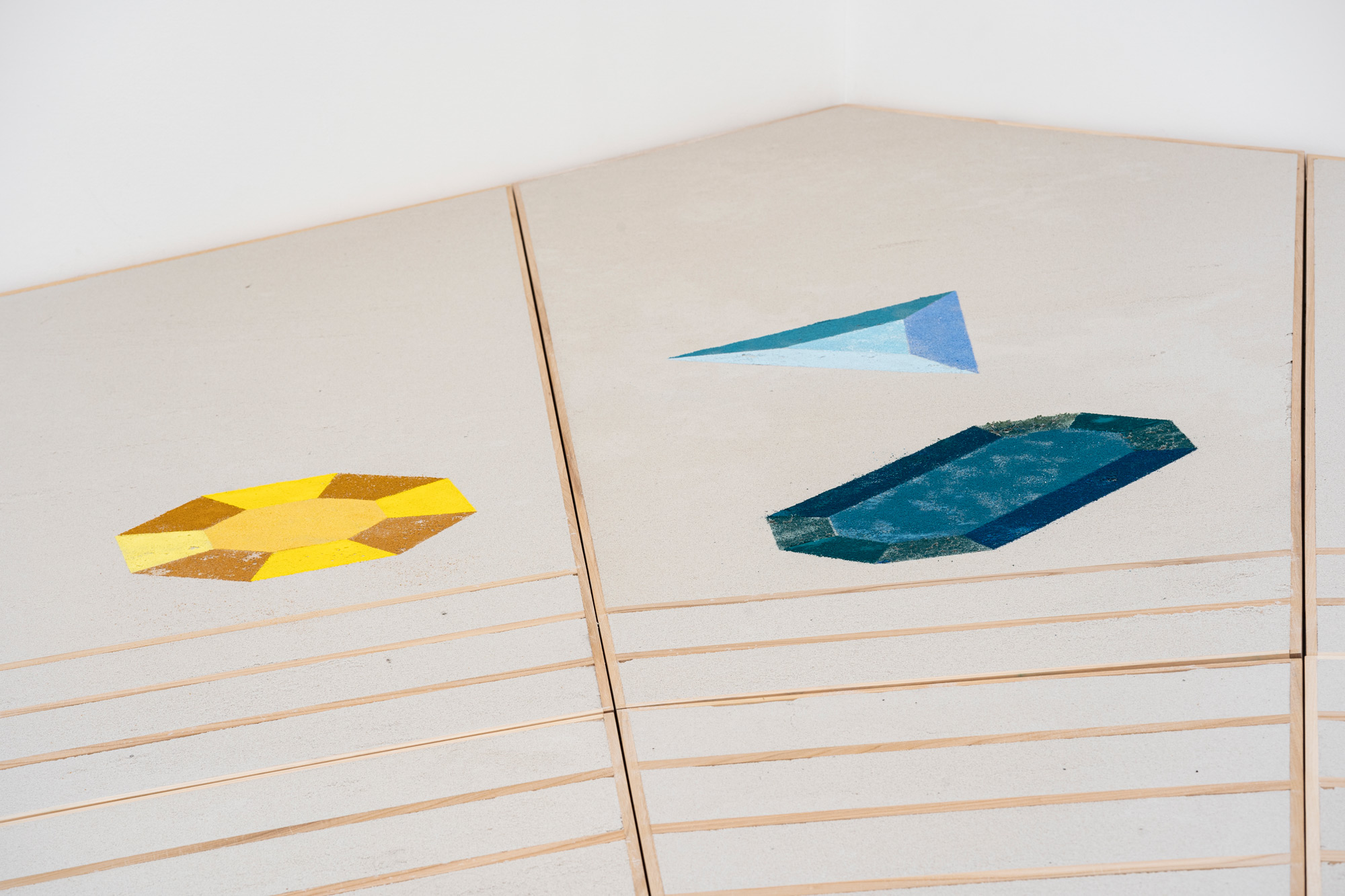
Home is dear, Home is best, 2022
Pigment, sand, wooden structure
sizes variable
Photo credits: Fabrice Schneider
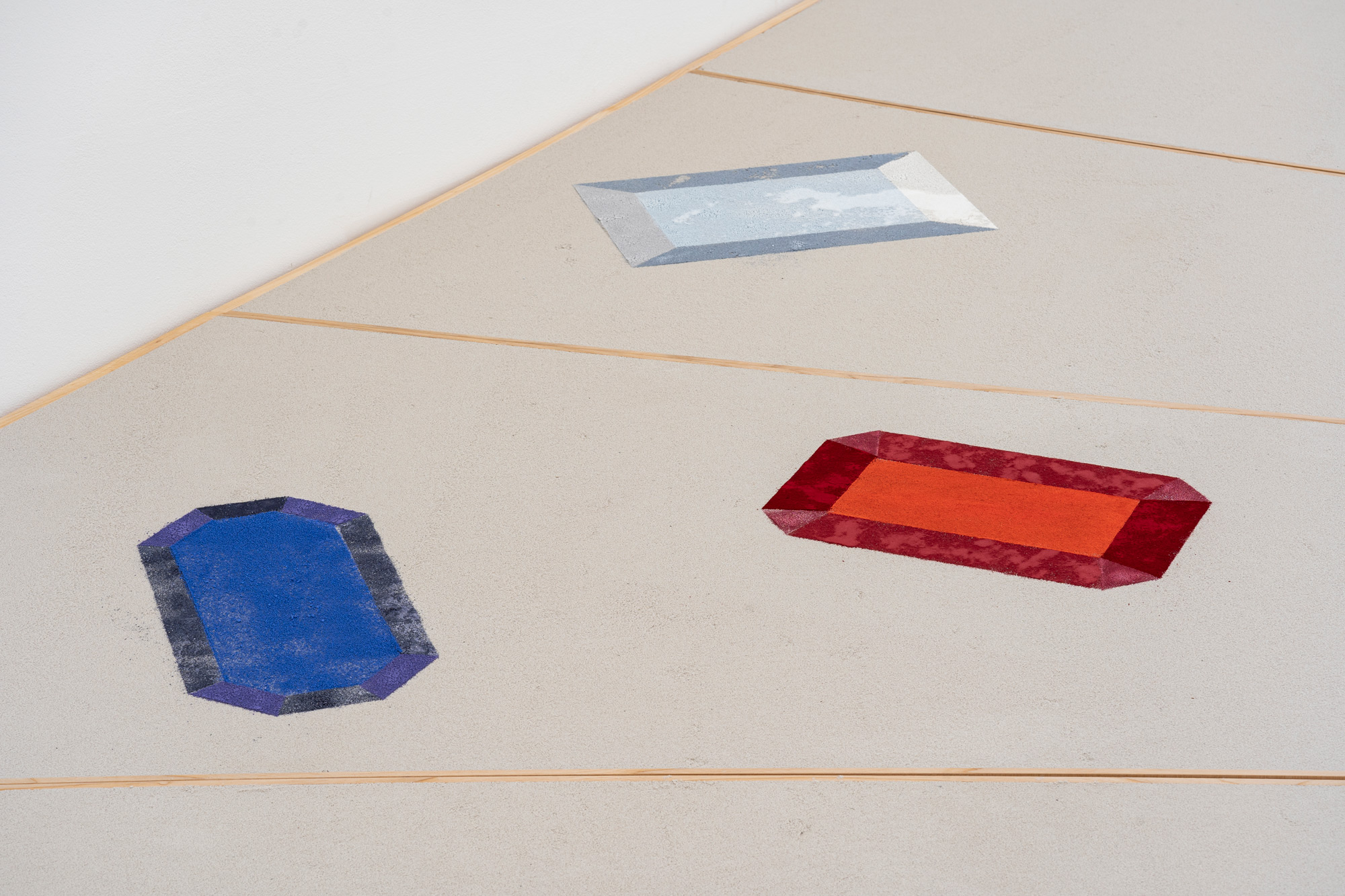
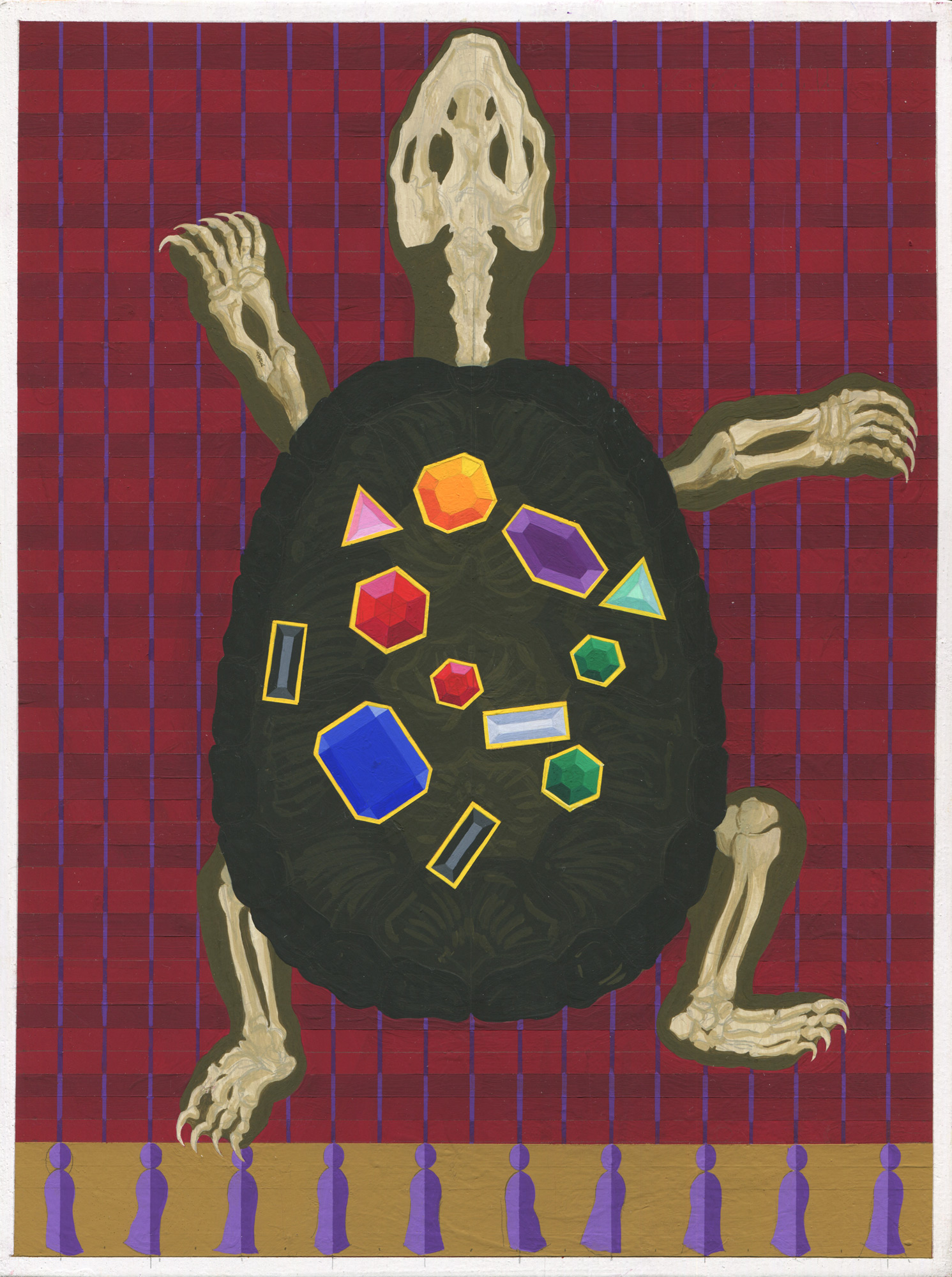
Legend: Spider web (Home is dear, home is best), 2022
Gouache and silver point on poplar panel
21 x 28 cm
Sand: timeless yet ephemeral, sand is used in diverse manufacturing processes, in the creation of new territory or simply for cleaning the floor. From the Navajo in North America to Aboriginal people in Australia, coloured sand is used to create temporary sand paintings, often connected to healing ceremonies. In Belgium there is also a tradition of sand painting: Bosmans’ hometown of Lommel is known for its annual sand painting competition.
For his sand painting, Bosmans created a shallow elm frame in the form of a spider’s web, onto which sand is poured and pigment is stencilled. A web is again a form of filter, built by the spider to trap its prey (or, in Bosmans’ version, its jewels) and the artist uses this motif to evoke the predatory aspect of collecting.
The work’s title comes from the fable of Zeus and the Tortoise, credited to the Ancient Greek storyteller Aesop (620-564 BC). It tells how Zeus invited all the animals to his wedding, but only the tortoise failed to arrive. When asked why, she said she preferred her own home – a familiar feeling in these times of quarantine and social isolation – and as a punishment, Zeus made her carry her home with her forevermore. Bosmans illustrates the tortoise in the accompanying Legend painting, which also refers to the 1884 novel A rebours (Against Nature or Against the Grain) by Joris-Karl Huysmans. Its protagonist, Des Esseintes, loathes contemporary bourgeois society and retreats into a world of his own making. He purchases a tortoise to match his Oriental rug, but – finding its shell too dull – decides to have it encrusted with precious stones, a barbaric act which kills the tortoise. Bosmans considers the decadent figure of Des Esseintes as an example of the queer, male collector described by architectural historian Aaron Betsky in his book Queer space(1997). Betsky argues that in the 19th century, the self-construction of queer identity included “building up a fantastical world by gathering objects from all times and places”. The domestic realm was a closet, featuring “a collection of artefacts that defined the individual by serving as an objective map of his passions, by evoking other worlds than the one in which he was imprisoned, and by mirroring him in objects became a queer version of the self-enclosed world of the family.”